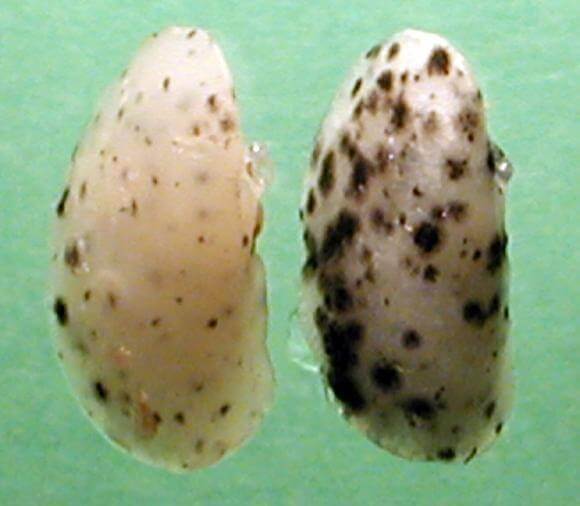Scientists have found that decreasing the levels of or blocking a specific protein commonly found in humans and many other animals allowed them to slow the spread of two different kinds of cancer to the lungs of mice. The research indicates that when the protein becomes dysregulated it helps pave the way for cancers to spread and suggests that addressing such dysregulation is a lead worth pursuing in fighting metastasis.
“We think everybody has Chitinase 3-like-1 (CHI3L1) in them because it plays a major role in our ability to fight off infections,” said Dr. Jack A. Elias, dean of medicine and biological sciences at Brown University and corresponding author of a new study that appears online in the journal Cancer Research. “But one of the things this paper shows is that inducing this molecule seems to be very important in the ability of tumors to spread.”
Other studies have shown that cancer patients with high levels of the protein, also called YKL-40 in people, have a notably worse prognosis than cancer patients with lower levels.
In the new study, the researchers at Brown and Yale University sought to determine whether the protein is merely an indicator that cancer is spreading or has a meaningful role in the process. Elias’ lab studies the protein intensely in other diseases including idiopathic pulmonary fibrosis and asthma, and has shown it has a pivotal role in each.
To find out, they injected malignant melanoma and breast cancer cells into mice and assessed the extent of cancer spread after decreasing the accumulation of or blocking CHI3L1. Mostly they assessed the effects in the lung, but when they also looked in skin, they found that the effects observed there mirrored those in the lung.
Proteins and pathways
In years of studying CHI3L1, Elias’ research group has developed several ways of modifying the protein. Dr. Chun Geun Lee, a co-author and professor of molecular microbiology and immunology at Brown, has developed mice that lack the gene to make it. The research group has also developed antibodies against CHI3L1 and found a small-molecule drug that inhibits its production. The group has learned how to manipulate proteins that can either set CHI3LI into overdrive or apply the brakes to it.
In a series of experiments, Elias, Lee, and their research group systematically employed all these means to see what would happen in the mice and to identify the pathway, or molecular chain of events, that regulates the protein.
First they confirmed that CHI3L1 levels are indeed elevated in mice, as in people, with progressing cancer. In the lung it was especially prevalent in cells adjacent to metastases, or nodules of cancer that have spread.
Then they compared breast cancer and malignant melanoma spread in the lungs of mice with and without the genetic ability to produce CHI3L1. Those without the protein had much less spread after the same period of time than mice that produced the protein normally. Similarly, knocking down CHI3L1 with antibodies reduced the spread of melanoma to the lung.
They also did the same experiments in mice who lacked the ability to produce a protein called semaphorin 7a, which can kick CHI3L1 into action. Mice without semaphorin 7a expressed much less CHI3L1 and had less metastases of melanoma in the lungs. When the researchers blocked semaphorin 7a with antibodies, they found the same CHI3L1 and metastasis-suppressing effects.
Semaphorin 7a appears to regulate CHI3L1, they showed, by interacting with two intermediate proteins: ‘beta-1 integrin’ and ‘plexin C1.’ The former acts as a gas pedal for CHI3L1 while plexin C1 is more like a brake that decreases its production. So when they neutralized beta-1 integrin they saw less CHI3L1 and less metastasis. When they neutralized or decreased plexin C1 they saw more CHI3L1 and more metastasis.
Clinical considerations
The finding that the activation of the CHI3L1 pathway appeared to enable the spread of two different cancers, perhaps in two different tissues, suggests it could have a broader role, Elias said.
“That leads us to believe this may be a fundamental pathway in the generation of metastases,” he said.
Much more research is needed to be sure, he said, for instance to determine how CHI3L1 enables cancer spread.
“We know what molecules are involved in the triggering of this,” he said. “We don’t know where they are and which of them are on the tumor and which are in the normal tissue around the tumor.”
Because the Elias lab’s focus is on pulmonology, the researchers are hoping experts in other organs will study CHI3L1 in other areas of the body to determine if it plays the same role in these locations.
If further research strengthens the evidence that dysregulated CHI3L1 is a fundamental enabler of cancer spread, then developing a drug or biologic treatment to restore proper regulation would be worth trying, Elias and Lee said. In hopes of developing an asthma treatment, the group is already working on converting the CHI3L1-suppressing antibody it uses in mice into one that would be compatible with humans.
One long-term vision, Elias said, could be to prevent cancer spread after surgery to remove a patient’s main tumor.
“If you treated them in this manner could it prevent or really delay the spread of the tumor and give the person a longer and better life?” he said. “That’s the reason why we are excited about extrapolating these studies from the mouse to man.”
If our reporting has informed or inspired you, please consider making a donation. Every contribution, no matter the size, empowers us to continue delivering accurate, engaging, and trustworthy science and medical news. Independent journalism requires time, effort, and resources—your support ensures we can keep uncovering the stories that matter most to you.
Join us in making knowledge accessible and impactful. Thank you for standing with us!


how dis work i dun get it